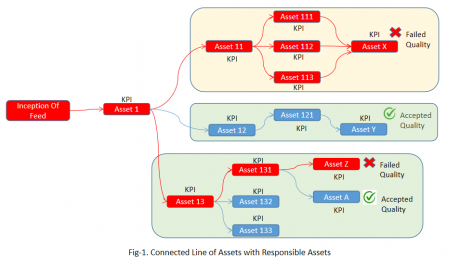Connected Analytics for Sustainability in Refinery Operations
With the advent of Technology, Oil and Gas Industry has transformed itself to adapt the best of analytics practices to extract maximum profit, without much expense at the productivity losses. Where, analytics practices include the use of Machine Learning/AI, Hybrid Modeling, Advanced Process Control (APC) and APM to mitigate the existing challenges of production losses, optimization, asset availability and sustainability. For the interest of this article our focus will be more towards achieving Sustainability through advanced analytics approach. Today, Oil and Gas industry is investing heavily to achieve its sustainability goals, through various programs to avoid unplanned downtime, reduce the losses, optimize the raw material, or to even control the COx, NOx, emissions to bring down the global adversary impact of green-house gases on the environment. To support the sustainability programs across industry in a more methodical way, we introduce the concept of ‘Connected Analytics’. Connected analytics, although being a relatively new terminology for manufacturing industry, is a more pronounced terminology in the area of Product Lifecycle Management (PLM), which goes by the name of ‘Digital Thread’. Connected Analytics borrows the core underlying idea in the Oil and Gas production space to support various analytical activities.

How?
Most of the engineer’s time is spent in troubleshooting the process to maintain their KPIs within the range. This process is time intensive and points to significant losses in production and monetary savings till the operation converges back to its normal condition. Each refinery operation is associated with large number of process variables, which at the time of troubleshooting makes it difficult to control and identify the responsible parameter that caused the anomaly. For such colossal operations with plethora of process parameters, we use ‘Connected Analytics’. Connected Analytics could be understood as the Nexus of Assets/Processes arranged in the order of their place/position in Industry. Today, we spend lots of lime to perform asset level analytics, but what if the quality failure in a specific asset is the outcome of it precursor assets? This has a broader picture to conceive, as we usually do not consider the information of the antecedent processes in terms of failures or anomaly. To mitigate this industrial pain, we introduce P&ID like “Bird’s Eye View” kind of visualization that considers all the interconnected assets, along with an eye on their critical parameters in real time. But to realize profits from such a level of advanced analytics and advanced visualization, industry needs to achieve some predefined level of digital maturity in terms of advanced modeling, softsensors,.etc. Once the prerequisites are set, engineers/operators can have the real-time dashboards for soft-sensors/first-principle driven KPI alongside its assets in the Connected Analytics view to monitor the operations more efficiently.

Written by,
ParthPrasoon Sinha
Sr. Data Scientist
Tridiagonal Solutions
- Published in Blog


